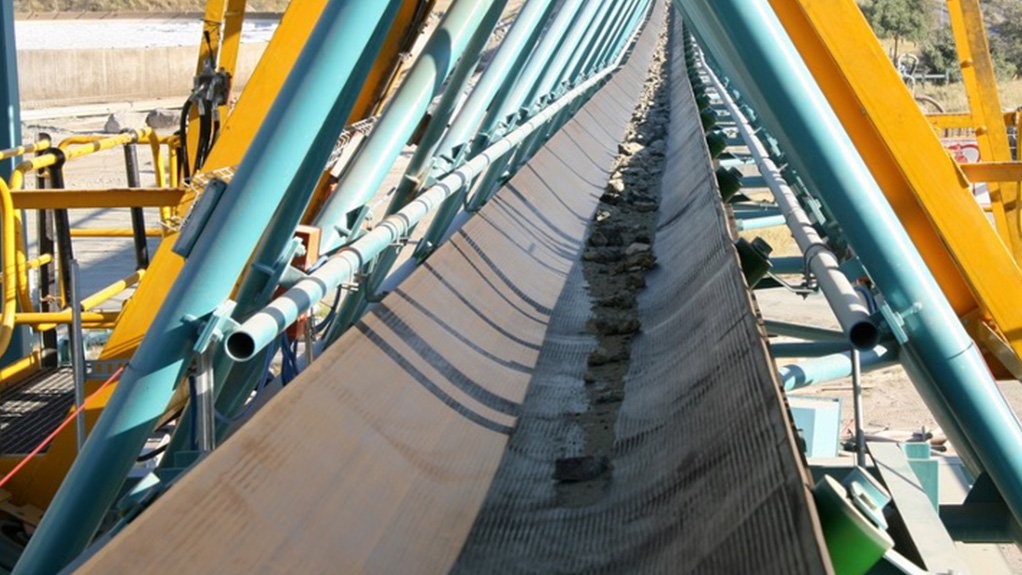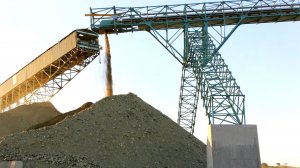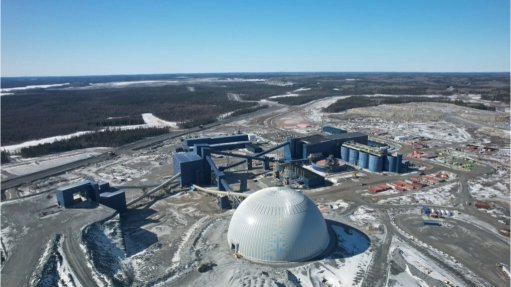Control-based upgrades popular among processing plants




EXPANDING HORIZONS Expansion projects are often the easiest, as companies typically also upgrade legacy infrastructure simultaneously to standardise operations in line with new technologies
UPGRADING When scheduling upgrade projects, the downtime is often used to complete some neglected equipment maintenance, install new plant equipment or a new section of the plant with associated equipment and controls
CENTRALISED OPERATIONS Implementing centralised operation centres at mining operations is frequently requested by processing plants
Upgrading existing control infrastructure reduces downtime – often caused by faulty infrastructure – and is frequently requested by processing plants, says automation company Iritron divisional manager Gerhard Greeff.
“Troubleshooting and fault-finding become easier after upgrades because panels are neat, wires are numbered and years of ‘short-term fixes that became permanent fixes’ are eliminated. In most cases, the newer infrastructure is more efficient, easier to use, reduces points of failure on the infrastructural level and makes the control more robust with less recurring issues,” he explains.
These projects can require downtime and production stoppages at mines to remove old infrastructure, install new infrastructure and then to commission the new infrastructure connected to existing equipment, ensuring everything operates the same as before the upgrade.
There are also challenges when scheduling upgrade projects, as processing plants need to maintain a high level of throughput to remain profitable.
Hence, when scheduling such projects, the downtime is often used to complete neglected equipment maintenance, and install new plant equipment or a new section of the plant with associated equipment and controls.
Greeff says coordinating these different aspects is difficult and, owing to physical equipment installation delays, projects often take longer than anticipated.
The control infrastructure can be implemented and commissioned only when the physical processes are complete and the plant is available. This means that delays for other plant components impact on the control side.
“At the end of projects, timelines are frequently tightened and the control components take the brunt of it. Hence, the proper and detailed testing of all infrastructure and software before moving to site is necessary, as it allows for accuracy on site and reduces the time required to test and commission the new infrastructure,” he says.
Centralised Operations
Implementing centralised operation centres at mining operations is also frequently requested by processing plants.
These projects combine multiple control rooms and diagnostic offices into one integrated control room that houses survey, logistics, maintenance, metallurgy and production to ensure more coordinated communication.
Additionally, mines can display real-time key performance indicators regarding the state of the mine on video walls that enable workers to see the results concurrently.
Greeff says these projects often include changing the colourful control graphics to situational-awareness grayscale graphics, with colour used only to indicate alarm or abnormal conditions.
He adds that process efficiencies increase as the upstream and downstream effects of changes in the process become more apparent.
“Communication between departments in the control centre is more accurate because everyone can see the same information at the same time. This increases the speed of decision-making and allows for more informed decisions. This, in turn, increases productivity because decisions are made collaboratively and the actual execution of the decision is tracked and monitored, with frequent course correction when required.”
However, he says these projects typically involve changing work processes and, when combined with the restructuring of the physical workplace, this can prove challenging as mine houses and their staff are often resistant to change.
Further, expansion projects for plant operations are also frequently requested and involve new sections of mine or plant being built and commissioned, says Greeff.
These projects can increase throughput or, if the expansion replaces an end-of-life section, the maintenance of current output levels.
Greeff says these projects are often the easiest, as companies typically also upgrade legacy infrastructure simultaneously to standardise operations in line with new technologies.
“Mine expansions are oftentimes combined with processing plant expansions to allow for the handling of the increased mine output,” he adds.
Gabon Project
Iritron is working on a project for a manganese mine – designed and managed by a global multidisciplinary engineering, procurement and construction management consultancy – in Gabon.
Iritron was contracted late last year to deliver a solution comprising multiple engineering disciplines, including electrical motor control centres, a control system, closed-circuit television, an integrated control centre and network cabinets.
The electrical portion of the scope of supply was successfully delivered in June, with the remaining programmable logic controller, instrumentation and ad-hoc items delivered last month.
Iritron was impacted on by worldwide semiconductor shortages, which created logistical challenges, owing to supply chain disruptions and capacity shortages that were, in turn, exacerbated by the Covid-19 pandemic and port congestion, making it challenging to meet deadlines.
Greeff says some of the equipment is still on back order, with delivery promised only in 2023.
However, the software has been developed and the factory acceptance test has been completed for module two of the plant. Software development for module three will start soon.
The company has also assisted another client with expansion projects on various mines over the past decade.
It has also completed the installation of an integrated central operations control room for one of the client’s major sites and is upgrading some legacy aspects to follow the new standard.
“Mineral processing and mining has been the mainstay of Iritron’s business for years and will continue into the foreseeable future. However, Iritron has also diversified into other industries to level out resource usage and revenue generation,” concludes Greeff.
Comments
Press Office
Announcements
What's On
Subscribe to improve your user experience...
Option 1 (equivalent of R125 a month):
Receive a weekly copy of Creamer Media's Engineering News & Mining Weekly magazine
(print copy for those in South Africa and e-magazine for those outside of South Africa)
Receive daily email newsletters
Access to full search results
Access archive of magazine back copies
Access to Projects in Progress
Access to ONE Research Report of your choice in PDF format
Option 2 (equivalent of R375 a month):
All benefits from Option 1
PLUS
Access to Creamer Media's Research Channel Africa for ALL Research Reports, in PDF format, on various industrial and mining sectors
including Electricity; Water; Energy Transition; Hydrogen; Roads, Rail and Ports; Coal; Gold; Platinum; Battery Metals; etc.
Already a subscriber?
Forgotten your password?
Receive weekly copy of Creamer Media's Engineering News & Mining Weekly magazine (print copy for those in South Africa and e-magazine for those outside of South Africa)
➕
Recieve daily email newsletters
➕
Access to full search results
➕
Access archive of magazine back copies
➕
Access to Projects in Progress
➕
Access to ONE Research Report of your choice in PDF format
RESEARCH CHANNEL AFRICA
R4500 (equivalent of R375 a month)
SUBSCRIBEAll benefits from Option 1
➕
Access to Creamer Media's Research Channel Africa for ALL Research Reports on various industrial and mining sectors, in PDF format, including on:
Electricity
➕
Water
➕
Energy Transition
➕
Hydrogen
➕
Roads, Rail and Ports
➕
Coal
➕
Gold
➕
Platinum
➕
Battery Metals
➕
etc.
Receive all benefits from Option 1 or Option 2 delivered to numerous people at your company
➕
Multiple User names and Passwords for simultaneous log-ins
➕
Intranet integration access to all in your organisation




















